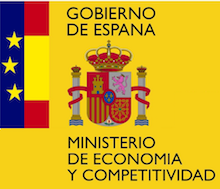 |
 |
 |
 |
 |
|---|---|---|---|---|
| Víctor Campos | Brendan Jou | Jordi Torres | Xavier Giró-i-Nieto | Shih-Fu Chang |
A joint collaboration between:
 |
 |
 |
 |
|---|---|---|---|
| Barcelona Supercomputing Center (BSC) | Google Inc. | Universitat Politècnica de Catalunya (UPC) | Columbia University |
Recurrent Neural Networks (RNNs) continue to show outstanding performance in sequence modeling tasks. However, training RNNs on long sequences often face challenges like slow inference, vanishing gradients and difficulty in capturing long term dependencies. In backpropagation through time settings, these issues are tightly coupled with the large, sequential computational graph resulting from unfolding the RNN in time. We introduce the Skip RNN model which extends existing RNN models by learning to skip state updates and shortens the effective size of the computational graph. This model can also be encouraged to perform fewer state updates through a budget constraint. We evaluate the proposed model on various tasks and show how it can reduce the number of required RNN updates while preserving, and sometimes even improving, the performance of the baseline RNN models.
Victor Campos, Brendan Jou, Xavier Giro-i-Nieto, Jordi Torres, and Shih-Fu Chang. "Skip RNN: Learning to Skip State Updates in Recurrent Neural Networks", In International Conference on Learning Representations, 2018.
@inproceedings{campos2018skip,
title={Skip RNN: Learning to Skip State Updates in Recurrent Neural Networks},
author={Campos, V{\'\i}ctor and Jou, Brendan and Gir{\'o}-i-Nieto, Xavier and Torres, Jordi and Chang, Shih-Fu},
booktitle={International Conference on Learning Representations},
year={2018}
}
This code was developed with Python 3.6.0 and TensorFlow 1.13.1. An older version of the code for TensorFlow 1.0.0 is available under the tags menu. To download and install TensorFlow, please follow the official guide.
The models are ready to be used with TensorFlow's tf.nn.dynamic_rnn and can be found under src/rnn_cells/skip_rnn_cells.py. We provide four different RNN cells:
- SkipLSTMCell: single SkipLSTM layer
- SkipGRUCell: single SkipGRU layer
- MultiSkipLSTMCell: stack of multiple SkipLSTM layers
- MultiSkipGRUCell: stack of multiple SkipGRU layers
An usage example can be found below:
import tensorflow as tf
from rnn_cells.skip_rnn_cells import SkipLSTM
# Define constants and hyperparameters
NUM_CELLS = 110
BATCH_SIZE = 256
INPUT_SIZE = 10
COST_PER_SAMPLE = 1e-05
# Placeholder for the input tensor with shape (batch, time, input_dims)
x = tf.placeholder(tf.float32, [None, None, INPUT_SIZE])
# Create SkipLSTM and trainable initial state
cell = SkipLSTMCell(NUM_CELLS)
initial_state = cell.trainable_initial_state(BATCH_SIZE)
# Dynamic RNN unfolding
rnn_outputs, rnn_states = tf.nn.dynamic_rnn(cell, x, dtype=tf.float32, initial_state=initial_state)
# Split the output into the actual RNN output and the state update gate
rnn_outputs, updated_states = rnn_outputs.h, rnn_outputs.state_gate
# Add a penalization for each state update (i.e. used sample)
budget_loss = tf.reduce_mean(tf.reduce_sum(COST_PER_SAMPLE * updated_states, 1), 0)This repository contains a PyTorch implementation of Skip RNN by Albert Berenguel.
We would like to especially thank the technical support team at the Barcelona Supercomputing Center, as well as Oscar Mañas for updating the original codebase to TensorFlow 1.13.1, adding TensorBoard support and improving the data loading pipeline.
| This work has been supported by the grant SEV2015-0493 of the Severo Ochoa Program awarded by Spanish Government, project TIN2015-65316 by the Spanish Ministry of Science and Innovation contracts 2014-SGR-1051 by Generalitat de Catalunya |  |
| We gratefully acknowledge the support of NVIDIA Corporation through the BSC/UPC NVIDIA GPU Center of Excellence. |  |
| The Image ProcessingGroup at the UPC is a SGR14 Consolidated Research Group recognized and sponsored by the Catalan Government (Generalitat de Catalunya) through its AGAUR office. |  |
| This work has been developed in the framework of the project BigGraph TEC2013-43935-R, funded by the Spanish Ministerio de Economía y Competitividad and the European Regional Development Fund (ERDF). |  |
If you have any general doubt about our work or code which may be of interest for other researchers, please use the public issues section on this github repo. Alternatively, drop us an e-mail at mailto:victor.campos@bsc.es.
